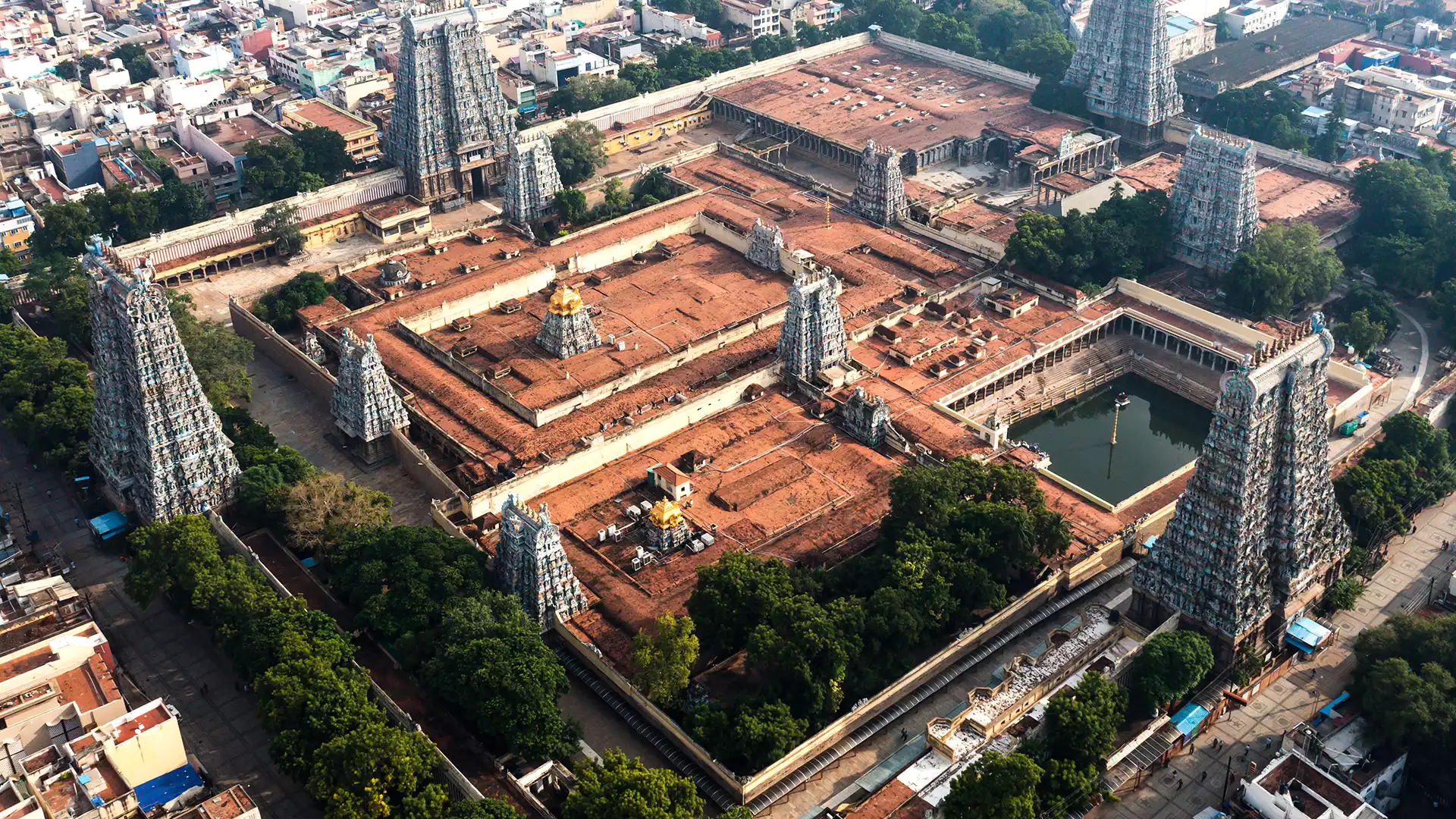The history of Madurai dates back to nearly the 6th century BCE, when it served as a vital commercial hub for the Pandya dynasty. The Meenakshi Amman Temple is believed to have been established around this time by the Pandyan kings.
According to legend, the temple was founded by Indra, the king of celestial deities, during a pilgrimage to atone for his sins. He felt his burdens lifted near a swayambhu lingam (self-formed lingam) in Madurai and attributed the miracle to its divine power. In gratitude, Indra built the temple to enshrine the lingam. It is also said that Shiva caused golden lotuses to bloom in the nearby pond, further enhancing the temple's sanctity.
Tamil literature has praised the temple for over two millennia. In the 7th century, the saint Thirugnanasambandar referred to the deity as Alavai Iraivan in his hymns. However, in 1310, the temple was plundered and destroyed by the Muslim invader Malik Kafur.
Reconstruction began during the reign of Viswanatha Nayak (1559–1600), the first Nayak king of Madurai. His efforts were supervised by Ariyanatha Mudaliar, his prime minister, and architect of the Poligar System. The temple's design was expanded significantly by Thirumalai Nayak (1623–1655), who added many structures, including the Vasantha Mandapam for spring festivals and the Kilikoondu Mandapam (Corridor of Parrots). Rani Mangammal further contributed by building the temple tank corridors and the Meenakshi Nayakar Mandapam.
In 1812, Rous Peter, the Collector of Madurai, earned the nickname "Peter Pandian" for his respect for all religions. He donated diamond-studded golden stirrups to the temple and credited Goddess Meenakshi with saving him from a life-threatening incident. After his death, he requested to be buried facing the temple as a mark of devotion.
During the early Pandya period, the temple's construction relied on contributions from the people. To support the effort, a tax was levied, and families donated rice, with each household giving a handful daily. This collective effort created a strong emotional connection between the people and the temple, making it a cherished symbol of unity and devotion.
